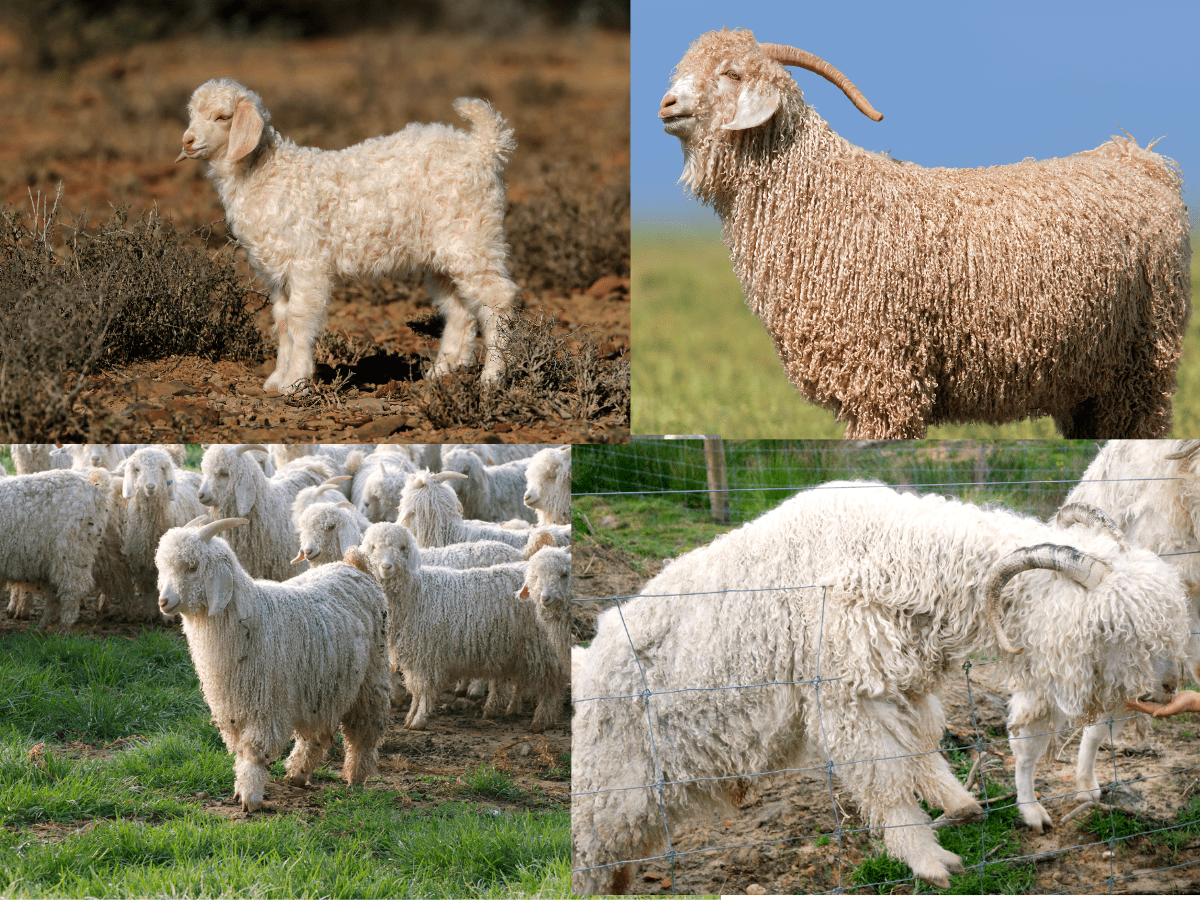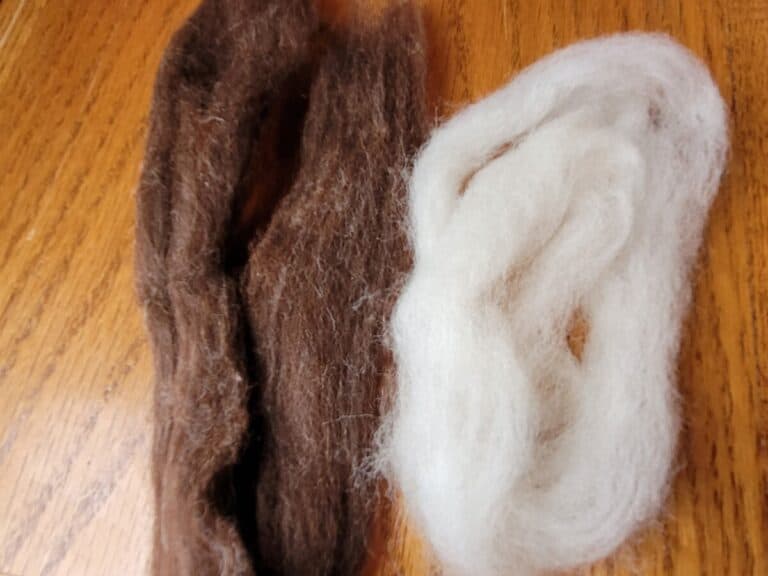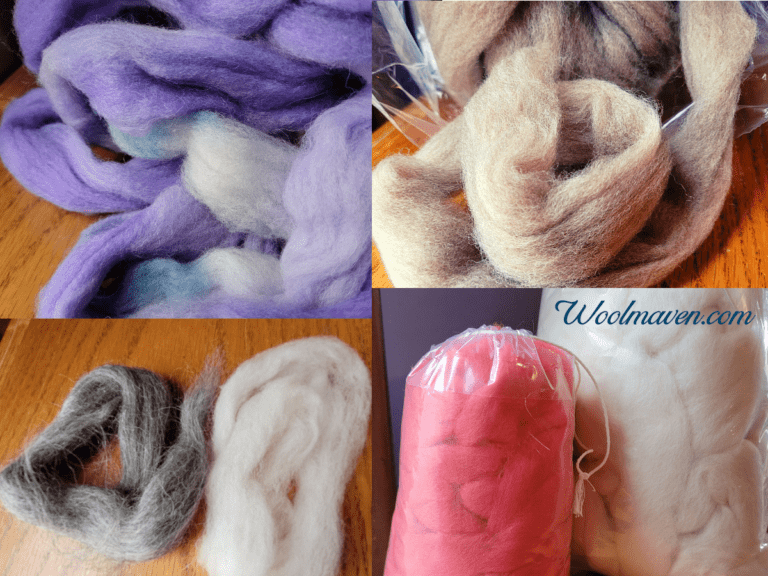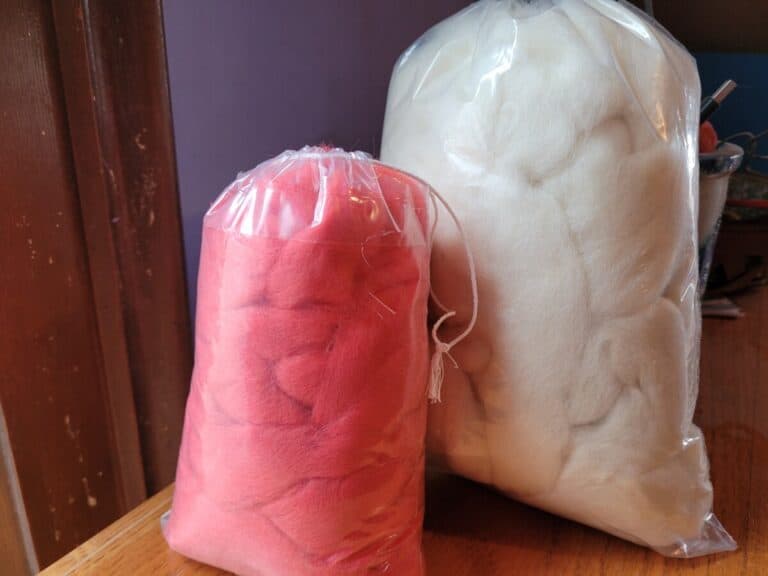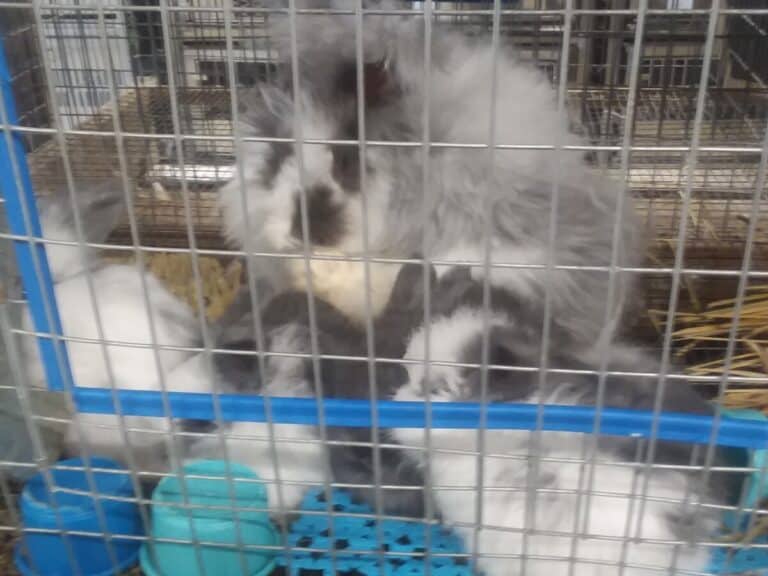Are Goats Killed For Mohair?
If you have done any searching around at all for mohair, you’ll come across the question of goats being killed for mohair.
Do goats really die when mohair is harvested or is this claim another sensationalized topic that isn’t quite what it seems?
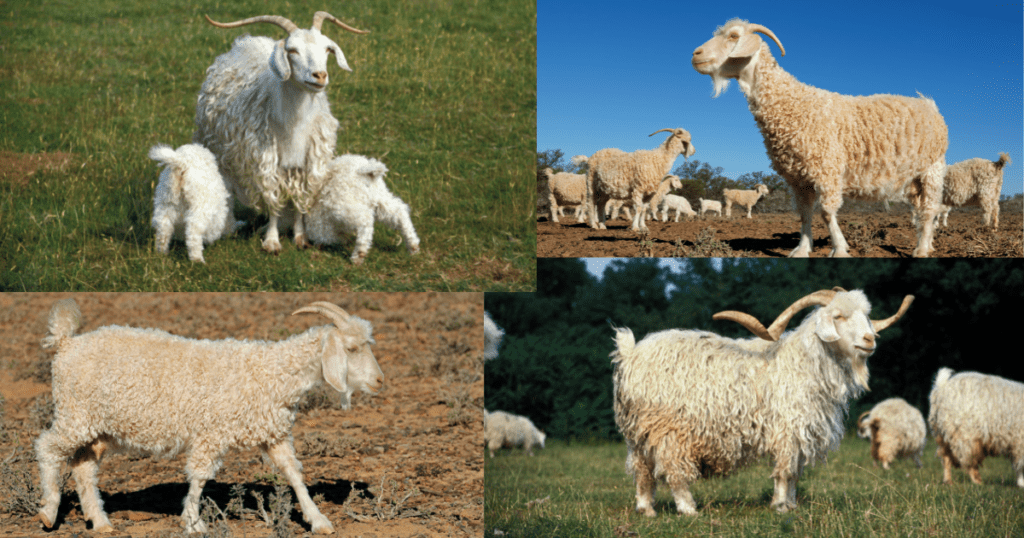
Goats are not killed for mohair
Goats are not killed to produce mohair! The idea that goats are killed to get mohair is false and misleading.
If you have the angora goats to produce mohair to sell but you kill the goat, how do you get more mohair? You don’t and that’s the problem!
Angora goats, the breed of goats that naturally grow mohair, are kept for years as productive and profitable fiber producers.
Only alive and healthy goats produce high quality mohair. Dead goats do not. This is just common sense!
What do you do with mohair? I like to blend it with wool and spin it into yarn, read Blending Mohair For Handspinning for more details!
Wondering what fiber is best to learn handspinning with? I’ve got a list of easy to use, easy to find wools that are perfect for new spinners!
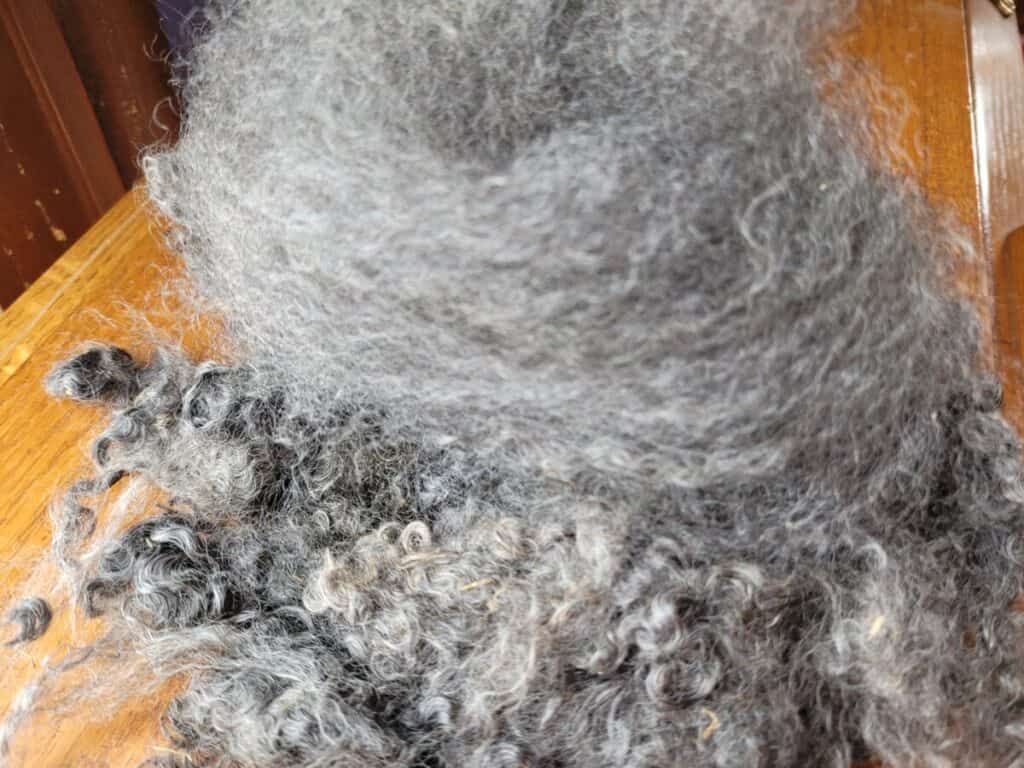
Mohair is the long, curly goat fiber
Mohair, the long, curly goat fiber that is used for suits, crafts and handspinning continually grows on the goat, year round.
The goats are shorn twice per year. Biennial shearing keeps the mohair in good condition and gives the goat less weight to carry around everyday.
Another benefit of shearing is that it is an opportunity for an up close inspection of the goat, more of a health check, to see how she is doing. Do her feet look ok? Is she keeping on weight?
If you want to learn more about working with mohair fiber, read Choosing Mohair For Handspinning which goes over the types of mohair available and what you do with them!
Are you a beginner looking to get started with spinning? Try my Spinning Course! It will take you from total beginner to confident spinner!
Angora goats are shorn twice a year
Angora goats are shorn two times each year to keep the mohair in good condition and to keep the length of the mohair fibers workable.
The shearers are professionals who travel the country, sometimes the world and shear goats and sheep for a living. The clippers are similar to dog grooming clippers, but bigger.
This is another point of confusion regarding mohair and a place where folks start playing word games saying the goats die for mohair to be harvested, they don’t! Goats are fine after shearing!
Shearing goats is no different than taking your dog to the groomers.
At the groomers, the hair will be cut off of the entire body by a professional who knows exactly how to clip the animal and has the experience to do the clipping quickly and efficiently.
In a few minutes your dog is happier and lighter. Shearing angora goats for mohair is the same idea, a quick clip by the pros and the goat is happier afterwards.
The money is in the mohair
While you could sell angora goats for meat, that would not make much sense since the main money from the goat is in the mohair. You can sell the mohair after each shearing.
Another aspect of angora goats that may be overlooked if you are not very familiar with livestock is that you get income from the does without selling them.
For most livestock, dairy or fiber animals being the exceptions, you only make money by selling the young ones or selling the older animals as breeding stock.
Either way, to get money from your animals, you no longer own the animal. That’s not the case with mohair, you keep the doe and you get money twice a year from the fiber.
True, as goats age they produce less valuable fiber, but you still get paid for it and keep the does to have more kids each year.
Kids have the most valuable fiber, called kid mohair, which is finer in microns than adult mohair.
Kid mohair is used for next to the skin items, while yearling or goatling fiber is the mohair famously used for suit fabric.
Interestingly enough, kid mohair is a grade of mohair, meaning it is a measurement of fineness of the fiber, not just fiber from young goats. Kid grade mohair can be produced by older goats.
As an angora goat ages the fiber tends to get thicker, so even a young adult with kid grade mohair will likely not have kid grade mohair all of her life, but can have the finer mohair for more than her first year.
If you would like to read more on the money aspects of raising angora goats and selling mohair, consider looking into these two articles, both from other sources.
Making Money with Angora Goats part 4, goes over the expenses and the income from a small angora goat farm that sells dyed, hand spun yarn for $24 per 4 ounce skein.
Goats For Fiber, lists $7.88 per pound of unwashed mohair, up to $40 per pound washed and prepared for handspinners
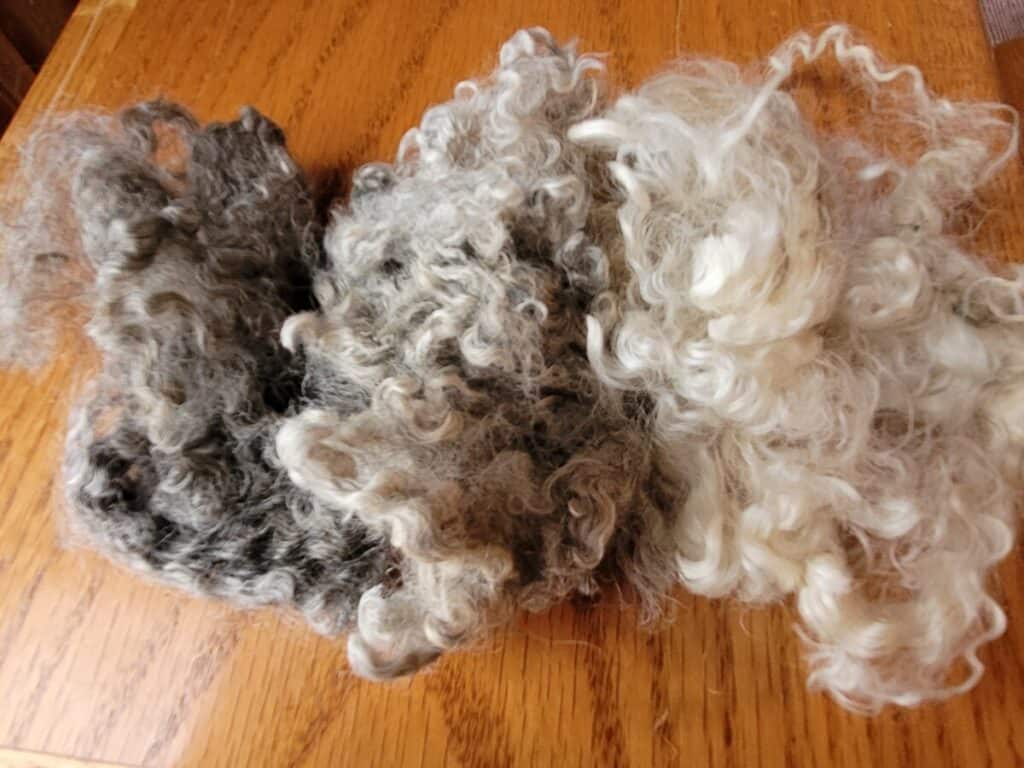
You can buy mohair directly from a small farmer
There are small farms that raise and sell mohair. If you are not a supporter of the larger farms or ranches, consider sourcing your mohair from folks that know their goats.
Check around online, an especially great source for straight from the farm mohair is Etsy. I got my mohair from a gal with a small farm and a few fiber goats in Maryland.
The fiber is wonderful to work with and I got to see the pictures of the individual goats that each order of mohair came from. I could see the color of the mohair both on and off the goat!
If you are a handspinner or weaver, consider giving mohair a try. I really like it, lovely to work with, a dream to blend and you keep that wonderful luster in the yarn. Nice!
There are also craftspeople who make garments out of mohair yarn. If you are looking to purchase mohair to wear or use, why not support a skilled crafter and buy directly from the farm?
Want to get started handspinning but are not sure what fibers to use? Get my list of easy to spin fibers, perfect for new spinners to learn with!
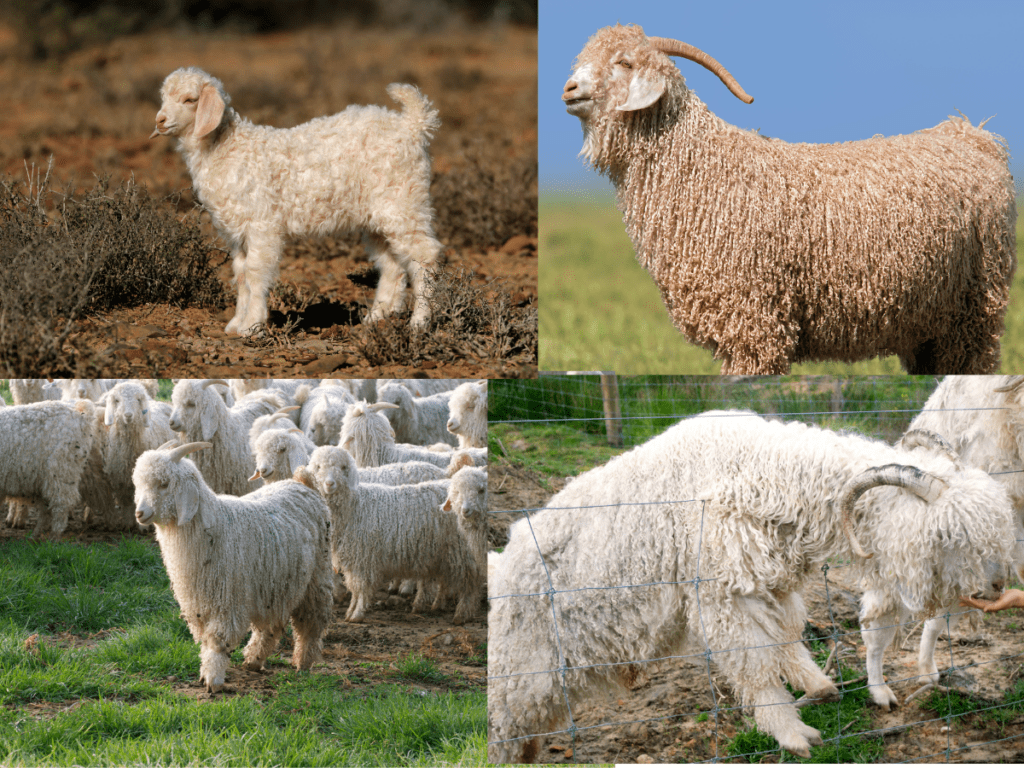
Angora goats in dry areas
Another aspect of raising goats for mohair that may not be thought of right away is that mohair is something that can be grown in challenging, mainly dry, areas of the world.
Farmers can have an income from angora goats in places that would otherwise be unable to support a family.
In my area if you need more of an income you could get a part time or full time job to supplement the income farm, but that’s not the case for many parts of the world.
For folks with minimal resources and a dry climate, an income producing animal, like angora goats, would be one of the keys to having money to buy supplies and feed their children.
If you don’t live in a nutrient poor area, this isn’t the first thing that comes to mind.
For small farmers with no other income and no town job options, livestock that can do well in their harsh climate can literally be a lifesaver.
The other side of the dry climate is that the vegetation that does grow needs to be eaten off by an animal that can thrive in the area or the plants stagnate, they just kind of stop.
In humid areas, the plants that are not eaten off will end up rotting down, this restarts the plant growth.
In dry areas they do not, which ties up those nutrients in the plants that would start to heal the land if nipped off and encouraged to regrow.
Goats or other dry land acclimated grazing or foraging animals can and do help the land grow more vegetation.
This means that having well managed goats on the poorly producing land can actually make the land produce more next year and the next.
Are you a beginner looking to get started with spinning? Try my Spinning Course! It will take you from total beginner to confident spinner!

